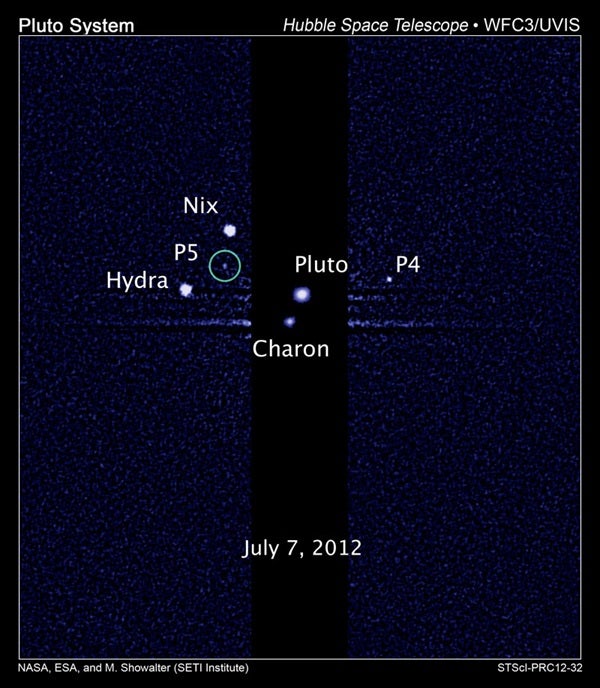Mark Showalter from the SETI Institute in Mountain View, California, led the team of astronomers in the discoveries of Kerberos and Styx. Both were first seen in lengthy exposures of the Pluto system taken by the Hubble Space Telescope. These images were obtained in support of NASA’s New Horizons mission, which will fly past Pluto in July 2015. Kerberos was discovered in 2011 and Styx in 2012.
The names were selected based on the results of an unprecedented Internet vote that was held during February 2013. The ballot received almost 500,000 votes, including 30,000 write-in suggestions. “I was overwhelmed by the public response to the naming campaign,” said Showalter. The website received international attention, and half the votes came from outside the U.S.
Kerberos is the Greek form of the name Cerberus, which ranked second in the voting. Styx ranked third. The top vote-getter was “Vulcan,” based on a suggestion from actor William Shatner of TV’s Star Trek. Vulcan was the name of the home planet of Mr. Spock. The IAU gave serious consideration to this name, which happens to be shared by the Roman god of volcanoes. However, because that name has already been used in astronomy, and because the Roman god is not closely associated with Pluto, this proposal was rejected. “I am grateful to the IAU for giving such careful consideration to our suggestions,” said Showalter.
Astronomers will obtain closer looks at Kerberos and Styx in 2015, when New Horizons becomes the first spacecraft to fly through the Pluto system. “The discoveries of Kerberos and Styx add to the mysteries surrounding the formation of the Pluto system,” said Alan Stern of the Southwest Research Institute in San Antonio, Texas, and principal investigator for New Horizons. During the flyby, the spacecraft will also search for additional moons, which might be too small for the Hubble telescope to detect. Afterward, New Horizons will go on to explore the more distant Kuiper Belt.










